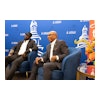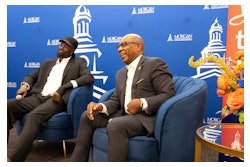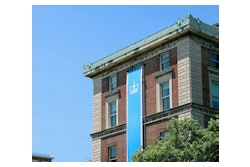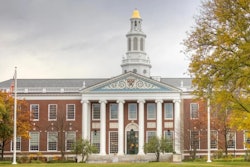Over the past two decades, American higher education institutions have been increasingly exporting their educational programs abroad. But the trend of establishing international branch campuses has led to a number of setbacks and controversy.
Universities have had to handle a host of issues in order to build campuses abroad. These challenges range from working with foreign governments to remove bureaucratic red tape to formulating a curriculum that maintains the home university’s standards yet takes into account the location of the satellite school and recruiting faculty and students who will succeed in an international environment.
According to Dr. Jason Lane, director of educational studies at Albany State University, the number of branch campuses grew significantly in the 2000s. “I define the 2000s as the gold rush period,” he says. “In 1995, there was 15 to 16 [branch campuses] — and now there are about 200 that we know of.”
Lane is co-director of the Cross-Border Education Research Team (C-BERT), founded in 2010 to study the organizational, sociological, economic and political perspectives of establishing a branch campus across geographical lines.
“Texas A&M is setting up shop in Israel, but you wouldn’t see the Texas prison system operating prisons in Mexico,” Lane notes. “Or you wouldn’t see the New York transportation department fixing roads in Canada, but you see public institutions going abroad. That is what led me to try to unpack this whole thing, and from there I just realized [there are a lot] of interesting questions.”
Building a foundation
Parsons the New School for Design was one of the first U.S. colleges to create an extension of its program abroad, setting up in Paris in 1921. It wasn’t until the 1960s and 1970s, however, that the trend started to pick up with other institutions.
Many schools wanted to be first in their area of expertise to set up abroad, and there were other motivating factors, including bolstering revenue and offering students a more global experience. Meanwhile, some foreign governments saw bringing U.S. schools to their country as a means of jumpstarting economic development. For example, the mayor of Metz, France, Jean-Marie Rausch, worked with Georgia Institute of Technology to establish the school’s first international campus in 1990, known as Georgia Tech Lorraine, to foster economic growth.
“I think we are seeing a maturation,” says Lane of the trend to build a campus overseas. “Campuses are looking more carefully about where they want to go and how they want to operate … according to our records, there are currently 17 branch campuses in various forms of development right now. It’s not stopping — it’s continuing.”
Grant Chapman, associate vice president for academic affairs at Webster University, says sometimes it’s not so much about building abroad than it is creating a global system.
“We like to think of them as less U.S. international branch campuses and more as a network,” he says.
With programs in Europe, Asia and Africa, Webster University is perhaps one of the most experienced U.S. colleges in international education, having first ventured abroad to Geneva in 1978. When establishing a program overseas, says Chapman, accreditation may come easily or may take longer than expected.
“We have been accredited in some places, and other places we have been operating for years and years without local accreditation,” he notes.
Other universities have experienced their own unique challenges in establishing abroad. Duke University has had construction delays. New York University and Yale have experienced faculty dissent, and politics has gotten in the way of MIT’s Moscow project.
Duke, which will be opening its doors to students at Kunshan University in China in the fall, has relied on U.S. government agencies regarding its global programs, keeping them informed about the school’s activities and progress. Though technically the university is an office of Duke’s Fuqua School of Business rather than an overseas campus, Duke was very much involved in the project’s construction.
“The school has invested in campus master planning and construction oversight,” says Laura Brinn, a spokesperson for Duke, noting that the city of Kunshan provided the land for the institution.
Cross-cultural curricula
Once the structure is in place, setting up a curriculum that works for the home school and program abroad can cause its own set of difficulties.
“It is a sort of getting to know each other and getting to know the educational-cultural system and being able to work out those differences where we operate,” says Chapman.
Students who were not raised in the U.S. K–12 system have different expectations of what the classroom environment and interactions should be, notes Lane.
Chapman points out that each campus also focuses on what’s endemic to that area.
“We like to give local flavor to the curriculum,” he says. ”We use the city or country as a laboratory for certain subjects.”
Indeed, Duke also plans to tailor its business school program in China to the area’s offerings.
“While our standards for curricular and academic excellence are the same in all locations where Duke courses or programs are delivered, teaching and conducting research in international locations provide a tremendous opportunity for faculty members to tailor the student learning experience to the region and provide students a robust global learning experience inside and outside of the classroom,” says Brinn.
However, Lane suggests quality control is one major issue all U.S. colleges abroad have faced.
“What is interesting is that you see that the positive reputational effect on the home campus doesn’t always carry over to the branch campus,” he says. “I know when Duke was first going into China, they ran some studies to see what parents were willing to pay. It turns out they weren’t willing to pay the same price for a Duke education in the United States. They knew there is a difference between going to the United States and staying in China. So they had to figure out what is the right price for them.”
To that end, Lane asks, “To what extent can these institutions provide a truly American educational experience?” He adds that many places don’t have the same academic freedoms as the United States.
Startup staff
Hiring faculty and staff who can work with a diverse classroom and also thrive abroad is another major challenge universities have faced.
“It’s not your solid, staid university life,” notes Lane. “You have to find people who are open to living in a foreign location and be part of that and be very fluent [in the language]. You have to get faculty to understand that you are not just going to teach and do research, but you are going to be a part of picking up the pieces in terms of helping out with advising and doing administrative tasks and doing outreach — things that they might not do on the home campus.”
Webster University, for example, has hired professors who have both an understanding of the U.S. educational system and local standards.
As Lane says, “These are very much startup organizations, and it takes a lot of work to make them successful and that’s hard sometimes for a very bureaucratic, old and large home campus to accept and understand.”



















